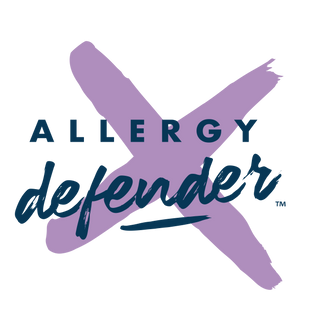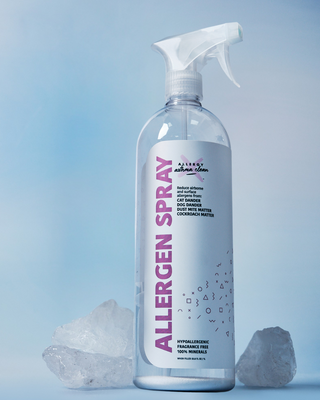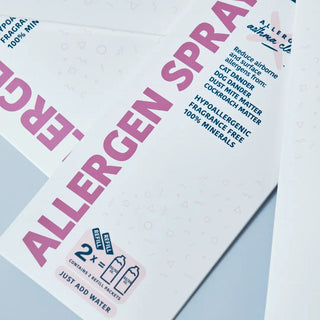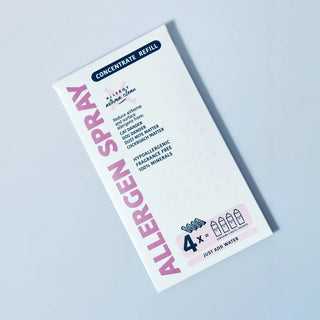Can dog hair cause asthma? Dog hair can carry pet dander, a known asthma trigger. This article explores how dog hair could cause asthma, the symptoms you might experience, and tips for managing exposure.
Key Points
-
Dog hair can carry allergens, particularly pet dander, which triggers asthma symptoms in sensitive individuals.
-
Good asthma control includes keeping on top of your asthma meds and regularly cleaning your home to reduce pet dander allergens.
-
No dog breed is entirely hypoallergenic; so careful consideration and testing for allergies are essential before bringing a pet into your home.
Can Dog Hair Cause Asthma?
Dog hair is not an allergen but can carry allergens like pet dander, and exposure can trigger asthma symptoms in sensitive individuals. Approximately 12% of the U.S. population is sensitive to dog allergens, making this a common issue among pet owners. Understanding the links between dog hair, dander, and asthma is vital for managing allergies and a healthier you.
Exposure to pet dander can occur through various means, such as contact with dogs or touching items that pets have slept on or rubbed against, like bedding or furniture.
What is Pet Dander?
Pet dander consists of proteins in skin cells, pet saliva, and urine. These tiny particles can remain airborne for long periods, making them a particular problem for allergy sufferers. Dander proteins can be inhaled through the nose or mouth or indirectly transferred after touching surfaces where the dander has settled. Despite their small size, these proteins can provoke significant allergic reactions without individuals realizing it.
Research indicates that there is little difference in dander allergen levels among hypoallergenic dog breeds, as all dogs produce pet dander. Therefore, dog hair itself is not an allergen but can contain pet dander, which is known to cause allergies in sensitive people.
How Dog Hair Contributes to Allergens
Dog hair can act as a carrier for pet dander, pollen, and mold spores, which can worsen asthma symptoms in susceptible people. Regular grooming and cleaning can help minimize the spread of these allergens in the home.
Allergy Symptoms Triggered by Dog Hair
For people with asthma triggered pet allergies, managing these symptoms can be tricky, as they are at a higher risk of asthma attacks. Respiratory effects can vary, including rapid breathing and chest discomfort. Prolonged exposure to allergens like pet dander can lead to chronic airway inflammation associated with asthma. This is not to be taken lightly. Respiratory distress is serious.
Approximately 33% of people with asthma are sensitive to dog allergens, highlighting the need for effective management strategies.
Common Allergy Symptoms
Common symptoms of pet allergies include a runny nose and sneezing. These symptoms can vary in severity and may not always appear immediately after exposure.
Other typical allergy symptoms may include itchy eyes, coughing, and skin reactions, which can lead to an allergic reaction.
Monitoring all these trigger symptoms can help individuals better understand their allergies.
Asthma-Specific Symptoms
Asthma sufferers may experience all the symptoms above in addition to chest tightness and wheezing when exposed to dog allergens. Asthma is characterized by the tightening of the airways, which can lead to severe breathing difficulties. These symptoms should not be taken lightly, as they can escalate into more severe asthma attacks if not properly managed.
In addition to chest tightness and wheezing, individuals with asthma may experience difficulty breathing, increased mucus production, and a persistent cough. These symptoms can require ongoing medicine to keep them under control.
Severe Reactions Could Mean a Trip to the Emergency Room
Increased exposure to dog allergens correlates with 349,000 emergency care visits annually due to asthma attacks. Elevated dog allergen exposure accounts for 44.2% of total emergency care visits among sensitized individuals. This highlights the substantial risk that dog allergens pose to those with asthma.
Exposing sensitive asthmatics to dog allergens in bedrooms dramatically increases their asthma attack frequency. So, you can see why this is important to avoid pet dander allergens in the bedroom.
Record Your Symptoms
Tracking symptoms and exposures to dogs can really aid in identifying specific asthma triggers. Common signs of allergies from pets include sneezing and itchy skin, while asthma symptoms may involve wheezing, coughing, chest tightness, and difficulty breathing.
If symptoms persist or worsen after exposure to dogs, consult your doctor or physician's assistant for professional advice. Monitoring and recording symptoms can provide valuable insights into what exactly you're allergic to, aiding in better management of your symptoms.
Diagnosing Allergies to Dog Hair
Allergy testing helps identify specific allergens, allowing individuals to work with healthcare providers to develop a management plan tailored just for you. This approach is worthwhile because it can really improve your quality of life and reduce the risk of severe asthma attacks.
Skin tests are commonly performed to diagnose pet allergies, while blood tests can also be used. Skin tests involve applying allergens to the skin to check for reactions, whereas blood tests measure specific IgE antibodies to determine sensitivity.
Managing Asthma Triggered by Dog Hair
Avoid exposure to allergens like pet dander on dog hair is the most effective treatment for asthma reactions. No dog, no allergies. But, if you're a dog owner then figuring out how to control your asthma is essential for your asthma management. It's also highly important to take your asthma medication if prescribed by your doctor.
Medications
Corticosteroids
Corticosteroids for asthma reduce airway inflammation and minimize trigger symptoms. They can be used for long term control.
Bronchodilators
Bronchodilators, Inhaled short-acting beta-agonists (SABAs) on the other hand, work to quickly open the airways. They are called rescue inhalers because they ease asthma symptoms once they begin.
You should always carry a reliever inhaler to manage asthma symptoms.
Keeping on prescribed meds aids in better managing asthma symptoms and reduces the risk of severe asthma attacks.
Lifestyle Adjustments
Changes to your lifestyle (and perhaps your dog, too!) can help manage asthma symptoms.
What kind of changes should you consider?
- Reduce exposure to pet dander with regular vacuuming and dusting
- Use air purifiers in every room, and especially the bedroom
- Keep dogs and all pets out of the bedroom
These adjustments can really improve indoor air quality and reduce the frequency of asthma episodes.
What about you as an individual? What could you do?
- Minimize direct contact with pets
- Wash hands after handling dogs
- Take asthma meds as prescribed by your doctor
- Wear a dust mask when cleaning
- Consider a dust mask when petting your dog
Choose Pets Wisely
Spend Time with Potential Pets
Spending time with that possible pet before adoption allows you to gauge your harmony with that dog and your allergic reactions. Trial periods with pets can significantly enhance the decision-making process regarding pet ownership. Rescue organizations allow lots of contact time with the dog including bringing the dog home before adopting.
Ultimately, connecting with a pet prior to adoption helps you make a more informed choice and ensures a suitable match. This approach can help prevent the heartache of having to rehome a pet due to unforeseen allergy issues. It's better for you and the dog.
Would Hypoallergenic Breeds Work?
No breed is truly hypoallergenic, meaning no dog can be completely free of allergy-producing substances. The term hypoallergenic refers to breeds that are less likely to cause allergic reactions. It does not indicate the total absence of allergens. Dogs that don't shed much, which is why they're considered hypoallergenic, are Poodles, Terriers and Schnauzers to name a few.
Ways to Control Dog Hair and Pet Dander in Your Home
Pet dander consists of tiny, lightweight particles that can remain airborne for lengthy periods of time. Pet dander can trigger allergic reactions even when pets are not present, as the particles can linger in a home. Reducing exposure to pet allergens may lead to a huge decrease in asthma-related health issues and may decrease asthma misery.
Allergen Spray
Our mineral-based Allergen Spray is a powerful solution for reducing airborne allergens, including pet dander. Designed to dry up allergens on contact, this spray* helps create a cleaner indoor home environment by breaking down allergens before they become airborne.
Unlike air filters that only trap allergens, Allergy Defender’s formula actively deactivates them at the source—on furniture, fabrics, and surfaces—providing an extra layer of protection against allergy triggers. Regular use can significantly improve indoor air quality, making it easier to manage asthma and allergy symptoms.
High-Efficiency Particulate Air (HEPA) Filters
HEPA filters (used in heating and air conditioning units) significantly improve indoor air quality by capturing airborne allergens, including pet dander. HEPA filters can trap 99.95% of particles as small as 0.1 microns, effectively reducing pet dander in indoor air. Utilizing HEPA filters in HVAC systems can reduce airborne pet dander and other allergens.
While they can significantly reduce airborne allergens, their effectiveness can vary based on usage. Regularly replacing filters and proper use of HEPA filters (make sure they fit as there are different sizes) are essential to maximize their benefits in managing asthma symptoms.
Cleaning Practices
Regular cleaning routines can significantly lower allergen accumulation from pets in your home. Regular and thorough cleaning, including vacuuming with HEPA-equipped vacuums helps minimize allergen buildup in homes. Keep a cleaning schedule (once or twice a week or more!) to include vacuuming, dusting and washing pet accessories to help control the quantity of allergens in your home.
Weekly wash bedding in hot water to minimize allergen build up in homes with pets (even if dogs aren't allowed in the bedroom). Also, consider having your upholstery cleaned every six monthsto to rid them of pet dander, dog hair and pollen.
What About Early Childhood Exposure to Pets?
Children living with dogs during infancy may have a lower likelihood of developing allergies later. Children living with pets during early childhood might have a lower risk of developing asthma later. Children who encounter high levels of indoor allergens from pets during infancy may have a decreased likelihood of developing asthma by age seven.
If you're a parent, understanding the role of early childhood exposure can help you make informed decisions about pet ownership and its potential long-term health impacts on your children. Early exposure to pets might offer protective benefits against developing asthma and allergies.
Are There Risks to Later Exposure?
When pet dander allergen exposure occurs after the immune system starts developing allergies, it can worsen allergic symptoms. So, delayed exposure to allergens in the home can heighten the risk of allergy and asthma symptoms in sensitive individuals.
Summary
In summary, dog hair itself is not an allergen but can carry pet dander, pollen, and mold spores, which can trigger asthma symptoms in sensitive individuals. Understanding the relationship between dog hair and asthma, recognizing the symptoms, and taking proactive steps to manage exposure is very important for maintaining a healthy you. Allergy testing and effective management strategies, including avoiding dogs, taking medications, and adjusting your lifestyle can help you manage your asthma symptoms.
Choosing the right pet and controlling the home environment can significantly reduce the risk of asthma. By carrying out these strategies, you can enjoy the companionship of your dog while maintaining your health and well-being.
Frequently Asked Questions
Can dog hair cause asthma?
Yes, exposure to dogs can lead to the development of asthma in some individuals, primarily due to allergens found in their saliva, urine, or dander. It's important to be aware of these potential triggers, especially if there is a history of allergies or asthma in your family.
Do I have to get rid of my dog if I have asthma?
If your doctor determines your dog triggers your asthma, it's advisable to keep on your meds and or remove the pet from your home for better control of your asthma.
Not everyone with asthma is allergic to pets, so consult a healthcare professional to assess your situation.
What are the common symptoms of pet allergies?
Common symptoms of pet allergies include sneezing, runny nose, itchy eyes, coughing, and skin reactions, while asthma-related symptoms may present as chest tightness, wheezing, and difficulty breathing. If you experience these symptoms, it is wise to consult a medical professional for help with your respiratory distress.
How can I reduce exposure to pet allergens in my home?
To effectively reduce exposure to pet allergens in your home, regularly clean your living spaces, and maintain a pet-free sleeping environment. Use HEPA filters that are designed to collect allergens in your HVAC unit. This approach can help create healthier indoor air.
Are there truly hypoallergenic dog breeds?
While no dog breed is entirely hypoallergenic, some breeds are less likely to trigger allergies due to lower shedding and reduced dander. Therefore, if you're looking for a dog that may minimize allergic reactions, consider those breeds known for their hypoallergenic qualities such as Poodles, Bichon Frisé and more.
*People love Allergen Spray because it works! It's highly rated. It's also natural and non-toxic. Try a bottle today. Allergen Spray


















